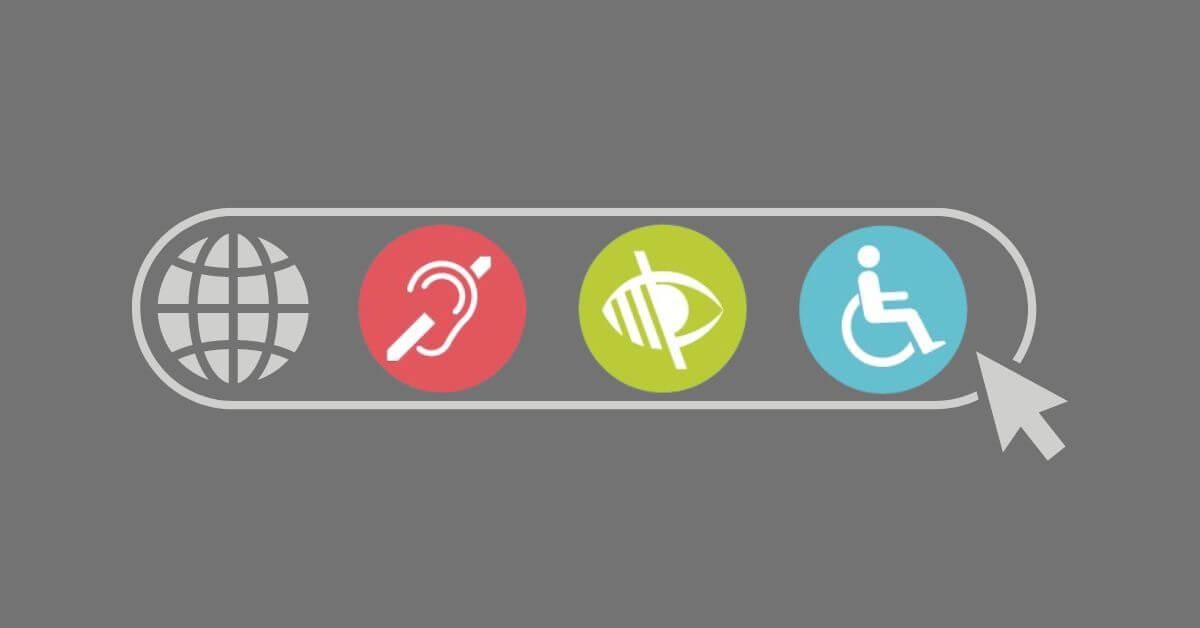What is Web Accessibility: Important Ways to Achieve It
Sep 01, 2024 7869 seen
Why is Web Accessibility Important?
Simply put, web accessibility is the process of creating tools, websites, and technological advancements that are accessible to individuals with disabilities.
Let’s discuss some aspects behind the meaning of web accessibility that will help you understand why it is important.
-
Inclusivity and Equal Access
The Internet should be accessible to everyone, including people with disabilities such as visual, auditory, motor, and cognitive impairments. Web accessibility ensures that all individuals, regardless of their abilities, can access information, interact with services, and enjoy equal opportunities online. An accessible website can satisfy a wide range of user needs, allowing everyone to participate fully in the digital world. -
Legal Compliance
Many countries have enacted laws and regulations that require websites to be accessible to people with disabilities. For instance, the Americans with Disabilities Act (ADA) in the United States and the Web Accessibility Directive in the European Union mandate that public and private sector websites meet specific accessibility standards. Failure to comply with these regulations can result in legal consequences, including lawsuits and fines. -
Improved User Experience
Accessibility and usability go hand in hand. A website designed with accessibility in mind often provides a better overall user experience. Features such as easy navigation, clear content structure, and alternative text for images benefit all users, not just those with disabilities. By enhancing accessibility, you can create a more intuitive and user-friendly website, leading to increased engagement and satisfaction. -
Expanded Audience Reach
According to the World Health Organization (WHO), over one billion people, or about 15% of the world's population, experience some form of disability. By making your website accessible, you open your digital doors to a broader audience, including those with disabilities. This not only fosters inclusivity but also presents an opportunity to reach potential customers or clients who might otherwise be excluded. -
SEO Benefits
Many web accessibility best practices align with search engine optimization (SEO) guidelines. For example, providing descriptive alt text for images and using proper heading structures make your content more understandable to screen readers and search engine crawlers alike. As a result, accessible websites tend to perform better in search engine rankings, driving more organic traffic.
How to Achieve Web Accessibility
Creating an accessible website involves several strategies and techniques that address different types of disabilities. The Web Content Accessibility Guidelines (WCAG) 2.1, developed by the World Wide Web Consortium (W3C), provide a comprehensive framework for making web content more accessible. Here are some key steps to achieve web accessibility:
-
Ensure Keyboard Accessibility
Many users with motor disabilities rely on keyboard navigation to interact with websites. Ensuring that all interactive elements, such as links, buttons, and forms, are accessible via keyboard is essential. This means that users should be able to navigate through the site using the 'Tab' key and activate elements using the 'Enter' or 'Space' keys. -
Provide Alternative Text for Images
Alternative text (alt text) is a description added to the HTML of an image. Screen readers use alt text to convey the content of images to visually impaired users. It is crucial to provide meaningful and descriptive alt text that accurately represents the image's purpose or content. -
Use Proper Heading Structures
Headings provide a clear and hierarchical structure to the content, helping users and assistive technologies navigate the page efficiently. Properly nested headings (H1, H2, H3, etc.) create a logical flow, making it easier for users to understand the content. -
Ensure Sufficient Color Contrast
Users with visual impairments, such as color blindness or low vision, may have difficulty distinguishing text from its background if there is insufficient contrast. Ensuring a high contrast ratio between text and background colors improves readability for all users. -
Provide Text Transcripts and Captions for Multimedia
Videos and audio content should be accessible to users with hearing impairments. Providing text transcripts and captions ensures that all users can understand the content regardless of their hearing abilities.
-
Design Forms for Accessibility
Forms are a crucial part of many websites, used for tasks like signing up for newsletters or making purchases. Accessible forms include clear labels, instructions, and error messages that are easy to understand and navigate.


